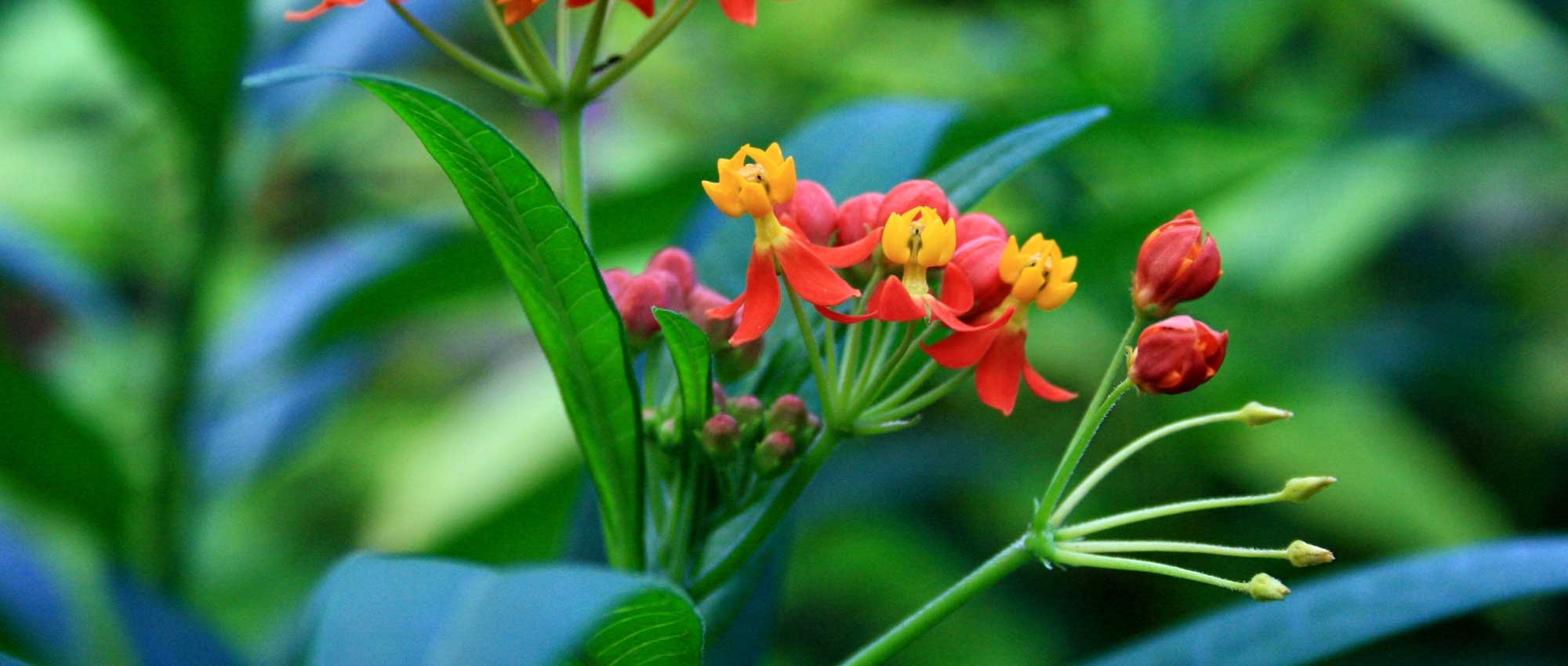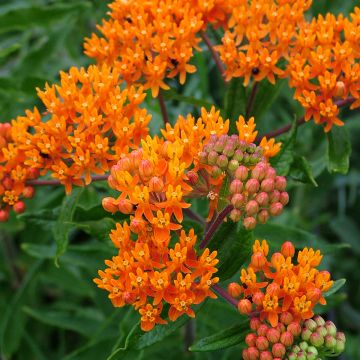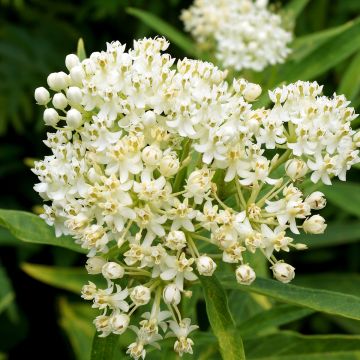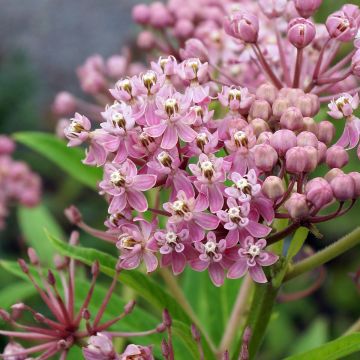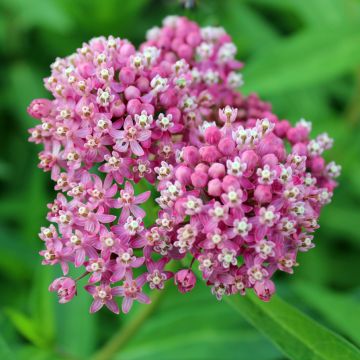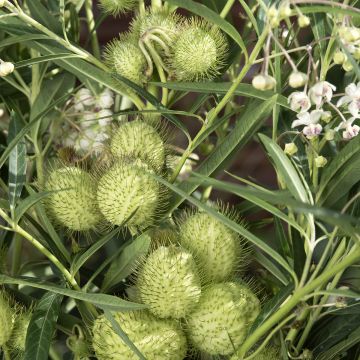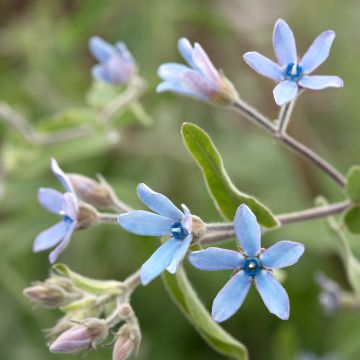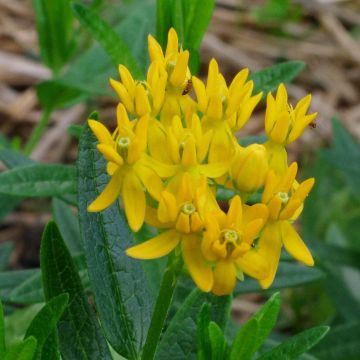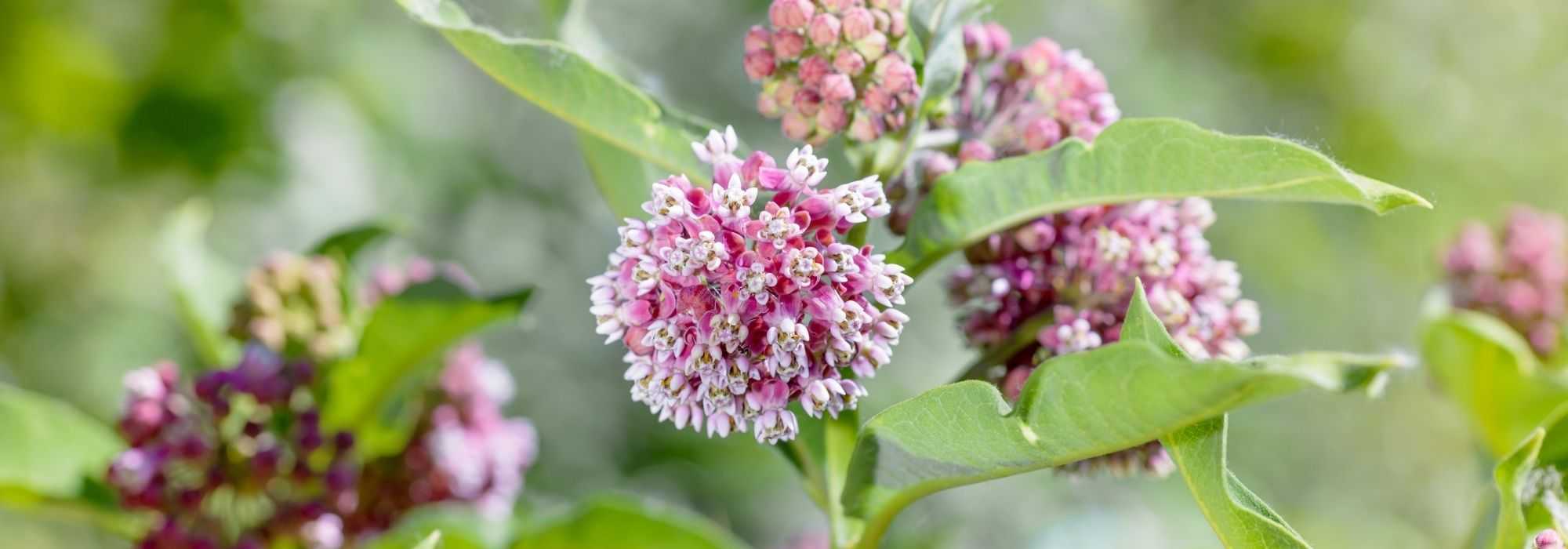

Asclepias tuberosa Seeds
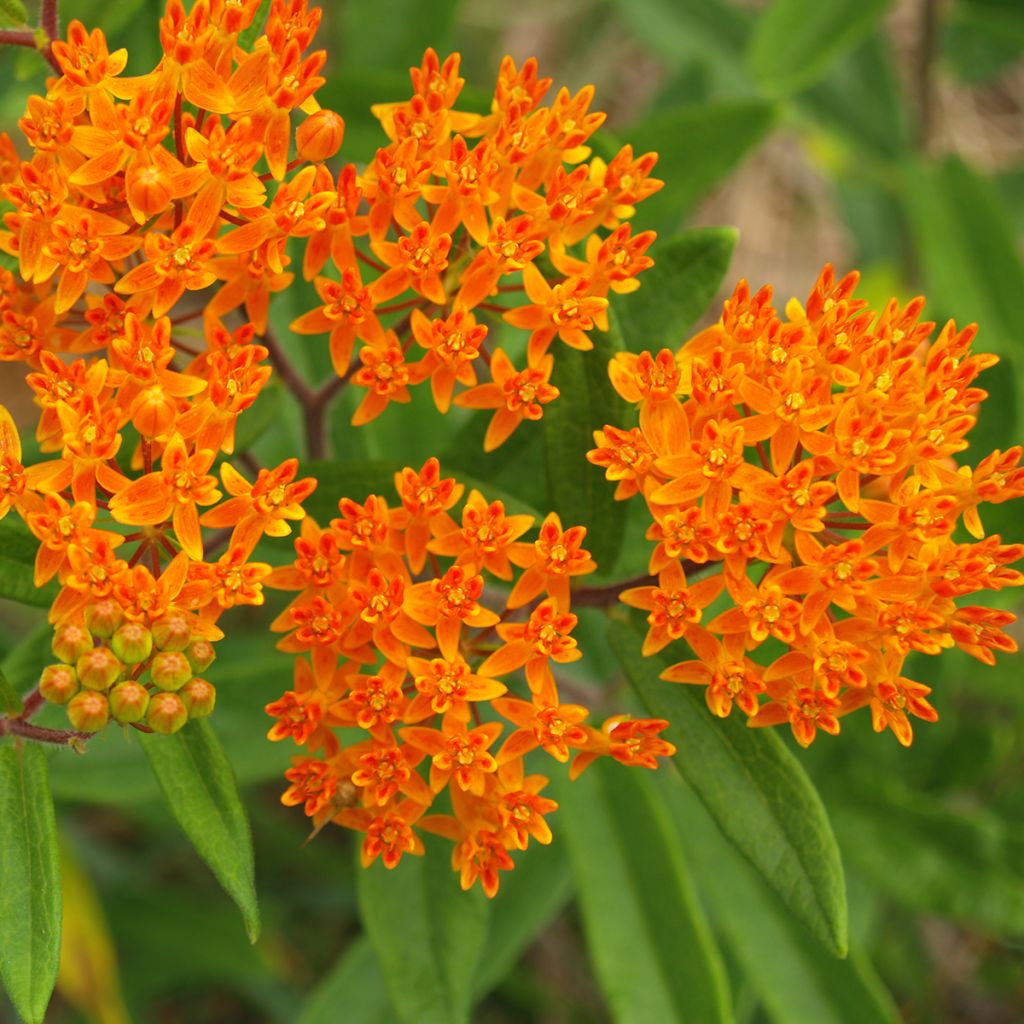

Asclepias tuberosa Seeds
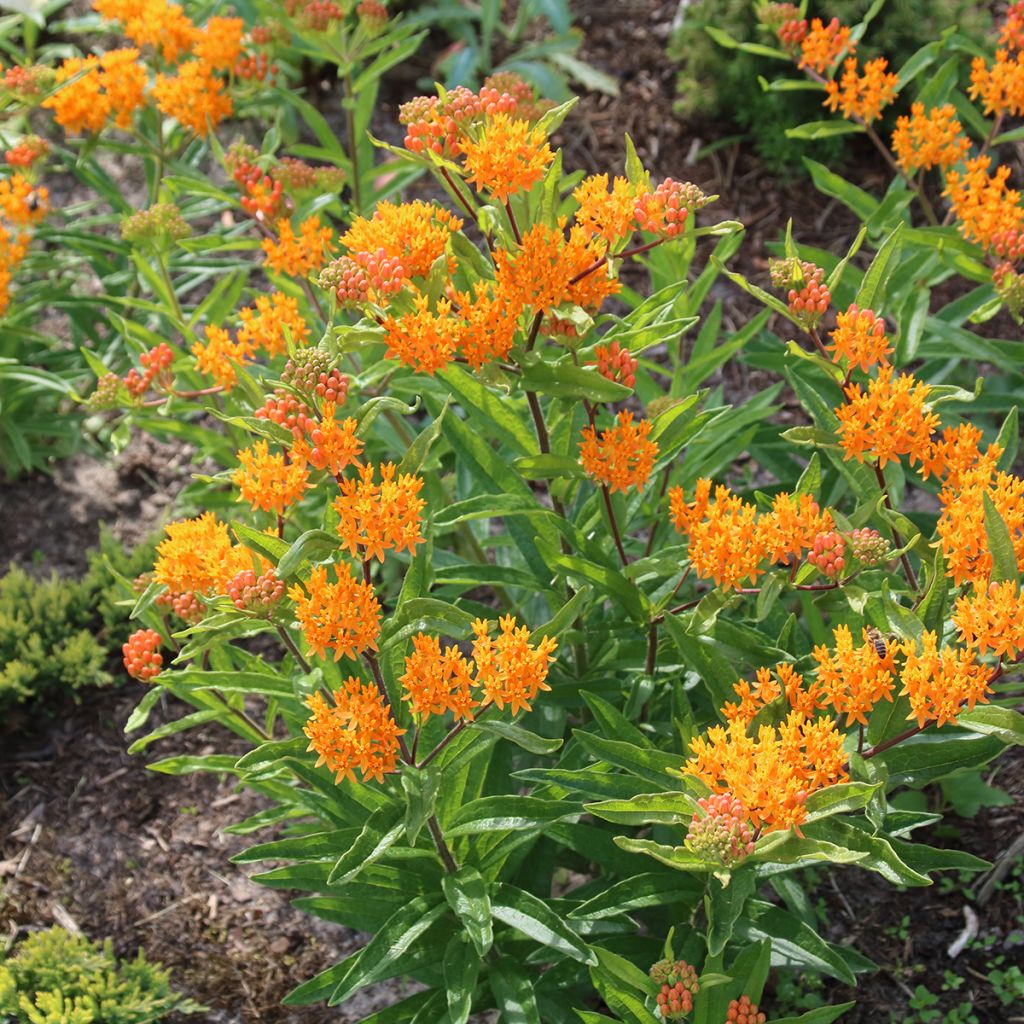

Asclepias tuberosa Seeds
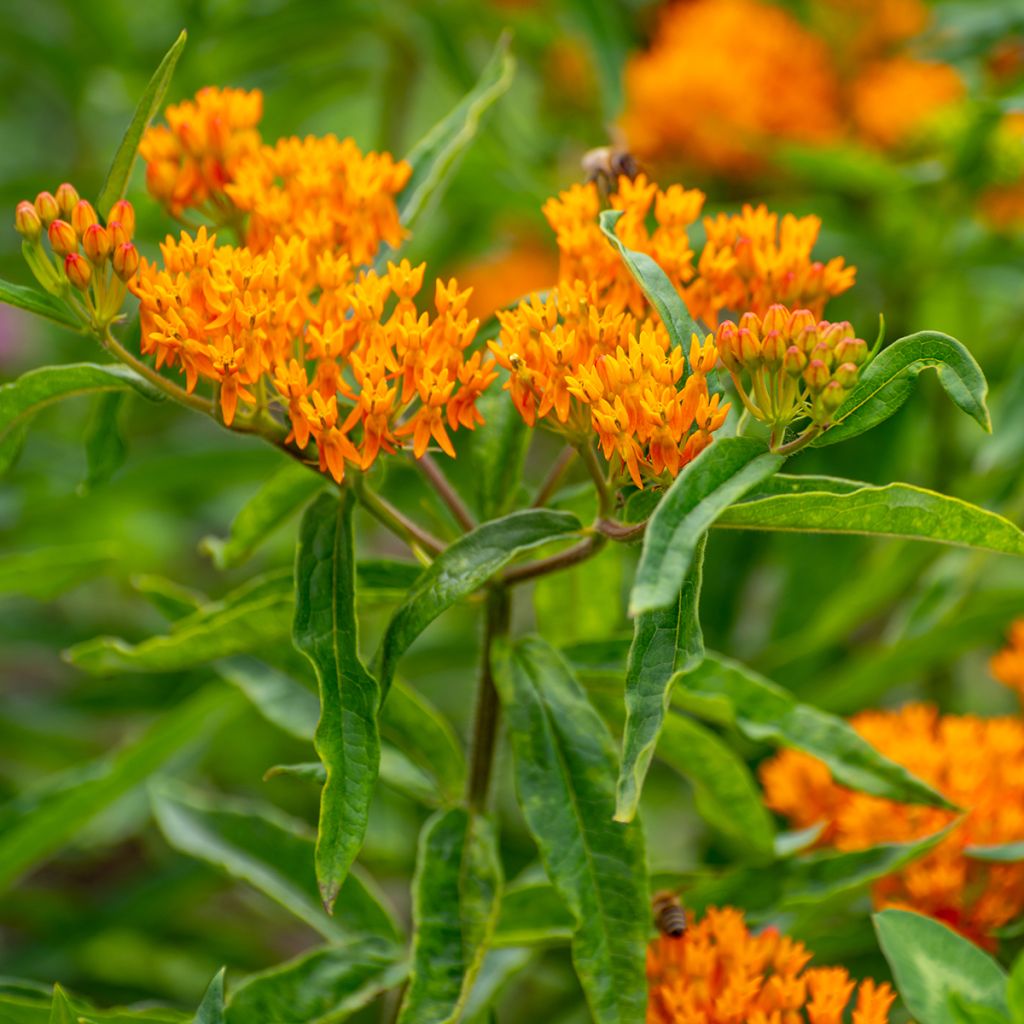

Asclepias tuberosa Seeds
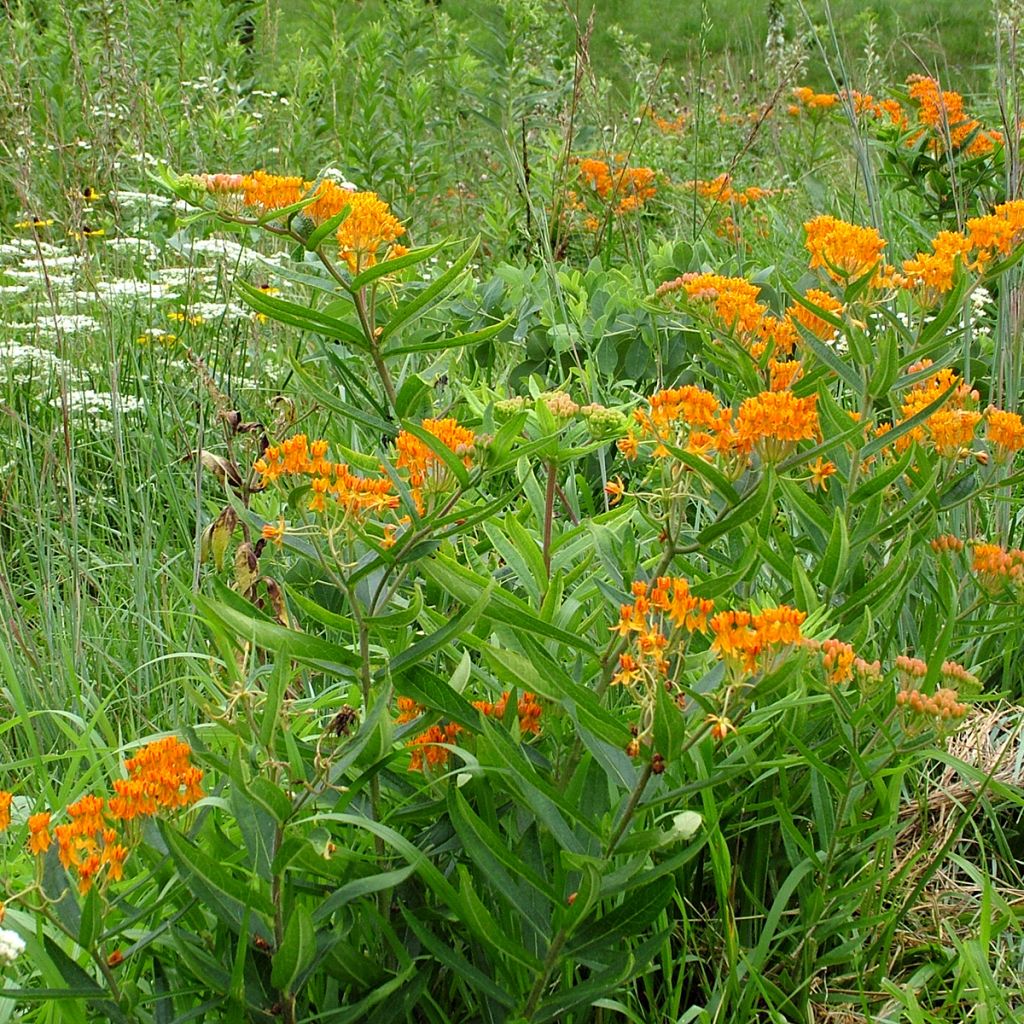

Asclepias tuberosa Seeds


Asclepias tuberosa Seeds
Asclepias tuberosa Seeds
Asclepias tuberosa
Butterfly Weed, Butterfly Flowr, Indian paintbrush, Indian potato, Pleurisy root, Swallow root, Tuber root, Wind root
Special offer!
Receive a €20 voucher for any order over €90 (excluding delivery costs, credit notes, and plastic-free options)!
1- Add your favorite plants to your cart.
2- Once you have reached €90, confirm your order (you can even choose the delivery date!).
3- As soon as your order is shipped, you will receive an email containing your voucher code, valid for 3 months (90 days).
Your voucher is unique and can only be used once, for any order with a minimum value of €20, excluding delivery costs.
Can be combined with other current offers, non-divisible and non-refundable.
Home or relay delivery (depending on size and destination)
Schedule delivery date,
and select date in basket
This plant carries a 6 months recovery warranty
More information
We guarantee the quality of our plants for a full growing cycle, and will replace at our expense any plant that fails to recover under normal climatic and planting conditions.
Would this plant suit my garden?
Set up your Plantfit profile →
Description
Asclepias tuberosa, is a tuberous perennial plant native to the dry prairies of North America. Appreciated for its exotic-looking orange flowering, it is a rather hardy plant. Its umbels of small star-shaped flowers come in different shades of orange and are intensely visited by pollinating insects. And its long, original fruits filled with white and silky seed plumes have earned it the nickname 'cottonweed'. Comfortable in dry terrain and rock gardens, it is perfect to accompany Euphorbias and Agaves.
Asclepias tuberosa is a plant of the Apocynaceae or Asclepiadaceae family, depending on the classification. It is native to the eastern and southeastern United States. With fairly rapid growth, it has a long and slender taproot capable of withstanding -15 °C (5°F) in well-drained soil. The plant forms a clump of sturdy, slightly hairy, unbranched stems that contain an irritating latex. The whole plant measures between 50 and 60 cm (20 and 24in) in height with a 50 cm (20in) spread. The stems are adorned with hairy leaves measuring 10 to 15 cm (4 to 6in) in length, ranging from light green to medium green, lanceolate to ovate in shape, arranged in spirals. They are deciduous and absent in winter. Flowering occurs from May to late September depending on the climate, and lasts for several weeks. At the end of the stems, appear cymes in the form of umbels, measuring 4 to 5 cm (2in) in diameter, composed of numerous small star-shaped flowers in various shades of bright orange, sometimes tinged with red or yellow. Nectar-rich, they are pollinated by certain butterflies and other bees. After pollination, fruits grouped in pairs up to 12 cm (5in) long form, carried at the end of an inclined peduncle. When ripe, these fruits split open to reveal numerous seeds with white plumes that will be dispersed by the wind. This plant is indifferent to soil type, but will appreciate soils rich in humus.
Asclepias tuberosa will find its place in sunny rock gardens, raised beds, or simply in dry-prone areas. Mix it with other rockery plants, Irises, or euphorbias for example. Its highly colourful flowers highlight the graphic design of agaves. Those who appreciate contrasts will pair it with the blue blooms of perennial flax or a sage like 'Blue Note'.
With its nectar-rich flowers, the Tuberous Milkweed attracts numerous insects, especially butterflies, which earned it the name 'Butterfly Weed' across the Atlantic.
Asclepias tuberosa Seeds in pictures
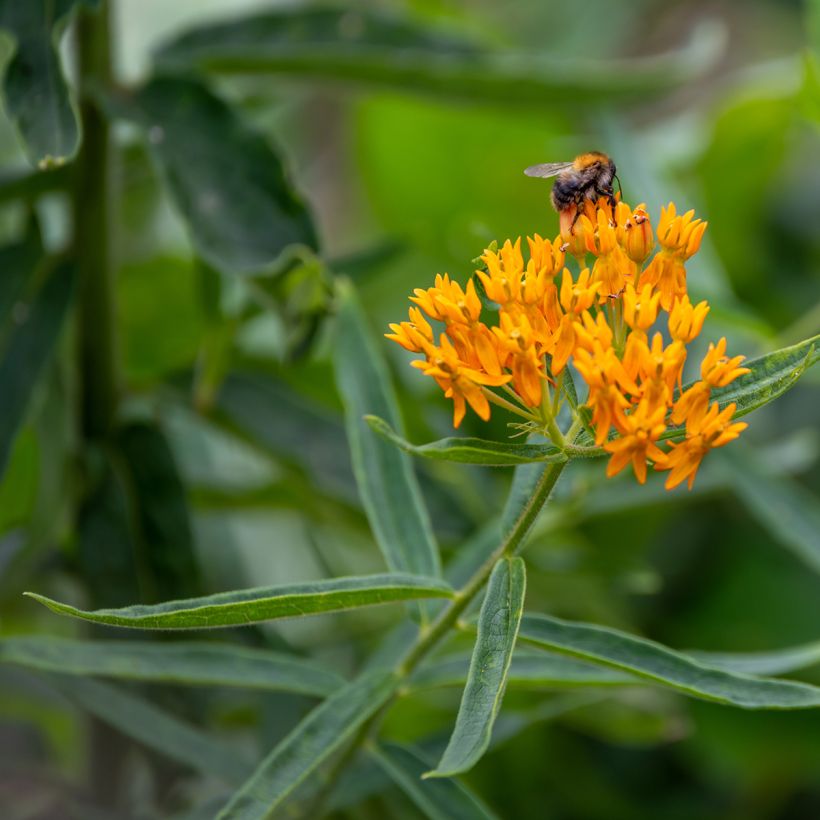



Flowering
Foliage
Plant habit
Safety measures
Botanical data
Asclepias
tuberosa
Apocynaceae (Asclepiadaceae)
Butterfly Weed, Butterfly Flowr, Indian paintbrush, Indian potato, Pleurisy root, Swallow root, Tuber root, Wind root
North America
atteintescutaneomuqueuses
Cette plante peut provoquer l'apparition de réactions cutanées indésirables, une atteinte des yeux, ou des difficultés respiratoires si elle est ingérée.
Ne la plantez pas là où de jeunes enfants peuvent évoluer. Evitez tout contact avec la peau: privilégiez l'emploi de gants pour la manipuler. En cas de contact, lavez-vous soigneusement les mains et rincez abondamment à l'eau la zone concernée. Lavez les vêtements entrés en contact. En cas de réaction cutanée, contactez votre médecin ou le centre antipoison le plus proche de chez vous. En cas d'atteinte étendue ou de difficultés respiratoires, appelez immédiatement le 15 ou le 112.Pensez à conserver l'étiquette de la plante, à la photographier ou à noter son nom, afin de faciliter le travail des professionnels de santé.
Davantage d'informations sur https://plantes-risque.info
Other Asclepias
View all →Planting and care
A period of cold stratification in the refrigerator for 60 days is recommended before sowing in spring. Sow in seed trays using a special sowing compost, lightly covering the seeds. Germination takes 30 to 90 days between 13°C (55.4°F) and 23°C (73.4°F). When the young plants have 5 to 6 leaves, you can transplant them into individual pots or directly into the garden if the soil is well warmed.
Autumn sowing is done in the same way and left outside until spring.
Cultivation: we recommend using gloves when handling this plant, as its stems contain an irritant latex.
This milkweed likes the sun and requires well-drained soil that does not retain too much water. It prefers soils rich in humus. It tolerates limestone well, as well as slightly acidic soil. In heavy and clay soil, its roots can rot. In this case, it is planted on a mound or a raised bed with enriched gravel soil. To help it establish roots, water it regularly during the first few weeks, but allow the soil to dry out slightly between waterings. Occasional watering may also be necessary for young plants in the first summer if it is very dry and hot. After that, the plant can fend for itself. Remove faded inflorescences if you want to avoid spontaneous sowing, although this milkweed is less prone than other species to spread everywhere. Young plants can be easily removed by simply pulling them out.
Sowing period
Intended location
Planting & care advice
This item has not been reviewed yet - be the first to leave a review about it.
Haven't found what you were looking for?
Hardiness is the lowest winter temperature a plant can endure without suffering serious damage or even dying. However, hardiness is affected by location (a sheltered area, such as a patio), protection (winter cover) and soil type (hardiness is improved by well-drained soil).

Photo Sharing Terms & Conditions
In order to encourage gardeners to interact and share their experiences, Promesse de fleurs offers various media enabling content to be uploaded onto its Site - in particular via the ‘Photo sharing’ module.
The User agrees to refrain from:
- Posting any content that is illegal, prejudicial, insulting, racist, inciteful to hatred, revisionist, contrary to public decency, that infringes on privacy or on the privacy rights of third parties, in particular the publicity rights of persons and goods, intellectual property rights, or the right to privacy.
- Submitting content on behalf of a third party;
- Impersonate the identity of a third party and/or publish any personal information about a third party;
In general, the User undertakes to refrain from any unethical behaviour.
All Content (in particular text, comments, files, images, photos, videos, creative works, etc.), which may be subject to property or intellectual property rights, image or other private rights, shall remain the property of the User, subject to the limited rights granted by the terms of the licence granted by Promesse de fleurs as stated below. Users are at liberty to publish or not to publish such Content on the Site, notably via the ‘Photo Sharing’ facility, and accept that this Content shall be made public and freely accessible, notably on the Internet.
Users further acknowledge, undertake to have ,and guarantee that they hold all necessary rights and permissions to publish such material on the Site, in particular with regard to the legislation in force pertaining to any privacy, property, intellectual property, image, or contractual rights, or rights of any other nature. By publishing such Content on the Site, Users acknowledge accepting full liability as publishers of the Content within the meaning of the law, and grant Promesse de fleurs, free of charge, an inclusive, worldwide licence for the said Content for the entire duration of its publication, including all reproduction, representation, up/downloading, displaying, performing, transmission, and storage rights.
Users also grant permission for their name to be linked to the Content and accept that this link may not always be made available.
By engaging in posting material, Users consent to their Content becoming automatically accessible on the Internet, in particular on other sites and/or blogs and/or web pages of the Promesse de fleurs site, including in particular social pages and the Promesse de fleurs catalogue.
Users may secure the removal of entrusted content free of charge by issuing a simple request via our contact form.
The flowering period indicated on our website applies to countries and regions located in USDA zone 8 (France, the United Kingdom, Ireland, the Netherlands, etc.)
It will vary according to where you live:
- In zones 9 to 10 (Italy, Spain, Greece, etc.), flowering will occur about 2 to 4 weeks earlier.
- In zones 6 to 7 (Germany, Poland, Slovenia, and lower mountainous regions), flowering will be delayed by 2 to 3 weeks.
- In zone 5 (Central Europe, Scandinavia), blooming will be delayed by 3 to 5 weeks.
In temperate climates, pruning of spring-flowering shrubs (forsythia, spireas, etc.) should be done just after flowering.
Pruning of summer-flowering shrubs (Indian Lilac, Perovskia, etc.) can be done in winter or spring.
In cold regions as well as with frost-sensitive plants, avoid pruning too early when severe frosts may still occur.
The planting period indicated on our website applies to countries and regions located in USDA zone 8 (France, United Kingdom, Ireland, Netherlands).
It will vary according to where you live:
- In Mediterranean zones (Marseille, Madrid, Milan, etc.), autumn and winter are the best planting periods.
- In continental zones (Strasbourg, Munich, Vienna, etc.), delay planting by 2 to 3 weeks in spring and bring it forward by 2 to 4 weeks in autumn.
- In mountainous regions (the Alps, Pyrenees, Carpathians, etc.), it is best to plant in late spring (May-June) or late summer (August-September).
The harvesting period indicated on our website applies to countries and regions in USDA zone 8 (France, England, Ireland, the Netherlands).
In colder areas (Scandinavia, Poland, Austria...) fruit and vegetable harvests are likely to be delayed by 3-4 weeks.
In warmer areas (Italy, Spain, Greece, etc.), harvesting will probably take place earlier, depending on weather conditions.
The sowing periods indicated on our website apply to countries and regions within USDA Zone 8 (France, UK, Ireland, Netherlands).
In colder areas (Scandinavia, Poland, Austria...), delay any outdoor sowing by 3-4 weeks, or sow under glass.
In warmer climes (Italy, Spain, Greece, etc.), bring outdoor sowing forward by a few weeks.






























